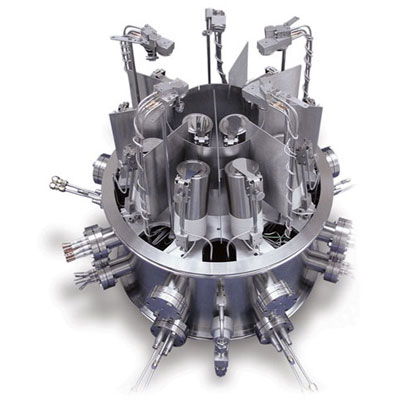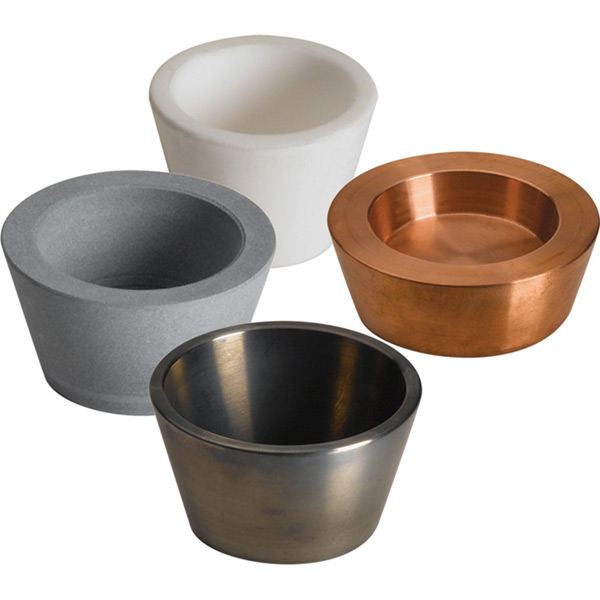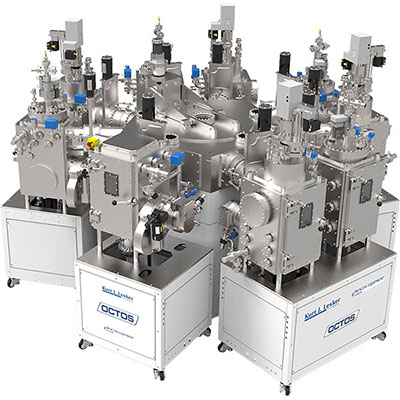Hafnium Oxide (HfO2) Pellets & Tablets Evaporation Materials
Hafnium Oxide (HfO2) Pellets & Tablets Overview
We sell these pellets and pieces by unit weight for evaporation use in deposition processes. These approximate materials prices are published to provide budgetary guidelines. Actual prices can vary and may be higher or lower, as determined by availability and market fluctuations. To speak to someone directly about current pricing, please click here .
Hafnium Oxide (HfO2) General Information
Hafnium oxide is an inorganic compound with a chemical formula of HfO2. It has a density of 9.68 g/cc, a melting point of 2,758°C, and a vapor pressure of 10-4 Torr at 2,500°C. It is off-white in color and generally considered to be one of the more stable hafnium compounds. Hafnium oxide has been utilized significantly in recent years as an addition to computer chips as a way to improve the speed and efficiency of processors. It is also evaporated under vacuum for optical coatings and semiconductor fabrication.
Hafnium Oxide (HfO2) Specifications
| Material Type | Hafnium Oxide |
| Symbol | HfO2 |
| Color/Appearance | White, Crystalline Solid |
| Melting Point (°C) | 2,758 |
| Theoretical Density (g/cc) | 9.68 |
| Z Ratio | **1.00 |
| E-Beam | Fair |
| E-Beam Crucible Liner Material | Direct in Hearth |
| Temp. (°C) for Given Vap. Press. (Torr) | 10-4: ~2,500 |
| Export Control (ECCN) | 1C231 |
| Comments | Film HfO. |
| Suggested QCM Crystal | Alloy Crystal: 750-1002-G10**** |
** The z-ratio is unknown. Therefore, we recommend using 1.00 or an experimentally determined value. Please click here for instructions on how to determine this value.
**** Suggestion based on previous experience but could vary by process. Contact local KJLC Sales Manager for further information
Empirical Determination of Z-Factor
Unfortunately, Z Factor and Shear Modulus are not readily available for many materials. In this case, the Z-Factor can also be determined empirically using the following method:
- Deposit material until Crystal Life is near 50%, or near the end of life, whichever is sooner.
- Place a new substrate adjacent to the used quartz sensor.
- Set QCM Density to the calibrated value; Tooling to 100%
- Zero thickness
- Deposit approximately 1000 to 5000 A of material on the substrate.
- Use a profilometer or interferometer to measure the actual substrate film thickness.
- Adjust the Z Factor of the instrument until the correct thickness reading is shown.
Another alternative is to change crystals frequently and ignore the error. The graph below shows the % Error in Rate/Thickness from using the wrong Z Factor. For a crystal with 90% life, the error is negligible for even large errors in the programmed versus actual Z Factor.

Thermal Evaporation of Hafnium Oxide (HfO2)
Hafnium oxide can be thermally evaporated from a tungsten boat such as our EVS8B005W, if using a KJLC® system. We estimate a deposition rate of 5 angstroms per second when the evaporation temperature is at ~2,500°C. A partial pressure of O2 at 5-10 X 10-5 Torr is recommended. It is important to note that evaporation temperatures likely exceed the temperatures reasonable to evaporate via resistive heating. E-beam evaporation is preferred over thermal evaporation for depositing HfO2 when possible.
E-beam Evaporation of Hafnium Oxide (HfO2)
Hafnium oxide is rated "fair" for electron beam evaporation. As of right now, we have not yet qualified a crucible liner material for e-beam evaporating hafnium oxide and generally recommend running it directly from the hearth of the e-gun.
If possible, Ion Assisted Deposition (IAD) is preferred when e-beam evaporating hafnium oxide. We also recommend sweeping the e-beam at low power to fully melt the material and to continually monitor the pressure to ensure that outgassing is at an acceptable level before increasing the power. Note that the melted material will turn black and that hole drilling should be avoided. We estimate a deposition rate of 5 angstroms per second when the evaporation temperature is at ~2,500°C. A partial pressure of O2 at 5-10 X 10-5 Torr is recommended. Under these parameters, we expect good adhesion for films.
Because not using a crucible liner is not always an option (especially in shared systems), some customers will use a copper crucible liner and place the material in the copper crucible liner as opposed to placing directly in the hearth. Crucible liners should be stored in a cool, dry place and always handled with gloves or forceps.
See highlighted results that match your result in the table below.
Ordering Table
| More Info | Material | Description | Size | Quantity | Purity | Part Number | Price | In Stock | Add To Cart |
|---|---|---|---|---|---|---|---|---|---|
| More Info | Material | Description | Size | Quantity | Purity | Part Number | Price | In Stock | Add To Cart |
| Hafnium Oxide |
EUDF HAFNIUM OXIDE TABLETS, |
10 - 12 mm Dia. x 4 - 5mm thick | 25 g | 99.9% | EVMHFO2TABA | P.O.R. |
|
||
| Hafnium Oxide |
EUDF HAFNIUM OXIDE TABLETS, |
10 - 12 mm Dia. x 4 - 5mm thick | 50 g | 99.9% | EVMHFO2TABB | P.O.R. |
|
||
| Hafnium Oxide |
EUDF HAFNIUM OXIDE TABLETS, |
10 - 12 mm Dia. x 4 - 5mm thick | 100 g | 99.9% | EVMHFO2TABD | P.O.R. |
|
||
| Hafnium Oxide |
EUDF HAFNIUM OXIDE TABLETS, |
10 - 12 mm Dia. x 4 - 5mm thick | 1 kg | 99.9% | EVMHFO2TABKG | P.O.R. |
|
||
| Hafnium Oxide |
EUDF HAFNIUM OXIDE TABLETS, |
10 - 12 mm Dia. x 4 - 5mm thick | 500 g | 99.9% | EVMHFO2TABT | P.O.R. |
|
||
| Hafnium Oxide |
EUDF HAFNIUM OXIDE PIECES, |
1mm - 3mm Pieces | 50 g | 99.9% | EVMHFO21-3B | P.O.R. |
|
||
| Hafnium Oxide |
EUDF HAFNIUM OXIDE PIECES, |
1mm - 3mm Pieces | 100 g | 99.9% | EVMHFO21-3D | P.O.R. |
|
||
| Hafnium Oxide |
EUDF HAFNIUM OXIDE PIECES, |
1mm - 3mm Pieces | 200 g | 99.9% | EVMHFO21-3H | P.O.R. |
|







